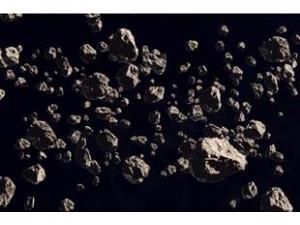



Date:19/02/20
 A team of researchers at Leiden University in the Netherlands have developed a neural network called “Hazardous Object Identifier” that they say can predict if an asteroid is on a collision course with Earth.
A team of researchers at Leiden University in the Netherlands have developed a neural network called “Hazardous Object Identifier” that they say can predict if an asteroid is on a collision course with Earth.
Their new AI singled out 11 asteroids that were not previously classified by NASA as hazardous, and which were larger than 100 meters in diameter — big enough to explode with the force of hundreds of nuclear weapons if they impacted Earth, potentially leveling entire cities. They also focused on space rocks that could come within 4.7 million miles of Earth, as detailed in a paper published in the journal Astronomy & Astrophysics earlier this month.
None are an imminent threat, however: not only are their chances of ever hitting Earth astronomically slim, but they are making their flyby between the years 2131 and 2923 — hundreds of years from now.
Using a supercomputer, the researchers fast-forwarded through a simulation of 10,000 years of orbital movements of the Solar System’s planets. The team then reversed the simulation, simulating future Earth-impacting asteroids by flinging them away from Earth and tracking their exact locations and orbits.
“If you rewind the clock, you will see the well-known asteroids land again on earth,” said co-author and astronomer Simon Portegies Zwart from Leiden University in a statement. “This way you can make a library of the orbits of asteroids that landed on earth.”
This simulation served as the training ground for their neural network, which then looked for patterns in the data common among the simulated asteroids that might eventually hit Earth.
To nail down whether their AI was actually good at spotting Earth-impacting asteroids in reality, the team tested it on known data of 2,000 asteroids listed by NASA. The neural network was 90.99 percent accurate in determining which ones were hazardous and which ones weren’t.
The team is now working on making its neural network even more accurate.
“We now know that our method works, but we would certainly like to delve deeper in the research with a better neural network and with more input,” Zwart said. “The tricky part is that small disruptions in the orbit calculations can lead to major changes in the conclusions.”
Neural network says these 11 asteroids could smash into Earth
 A team of researchers at Leiden University in the Netherlands have developed a neural network called “Hazardous Object Identifier” that they say can predict if an asteroid is on a collision course with Earth.
A team of researchers at Leiden University in the Netherlands have developed a neural network called “Hazardous Object Identifier” that they say can predict if an asteroid is on a collision course with Earth.Their new AI singled out 11 asteroids that were not previously classified by NASA as hazardous, and which were larger than 100 meters in diameter — big enough to explode with the force of hundreds of nuclear weapons if they impacted Earth, potentially leveling entire cities. They also focused on space rocks that could come within 4.7 million miles of Earth, as detailed in a paper published in the journal Astronomy & Astrophysics earlier this month.
None are an imminent threat, however: not only are their chances of ever hitting Earth astronomically slim, but they are making their flyby between the years 2131 and 2923 — hundreds of years from now.
Using a supercomputer, the researchers fast-forwarded through a simulation of 10,000 years of orbital movements of the Solar System’s planets. The team then reversed the simulation, simulating future Earth-impacting asteroids by flinging them away from Earth and tracking their exact locations and orbits.
“If you rewind the clock, you will see the well-known asteroids land again on earth,” said co-author and astronomer Simon Portegies Zwart from Leiden University in a statement. “This way you can make a library of the orbits of asteroids that landed on earth.”
This simulation served as the training ground for their neural network, which then looked for patterns in the data common among the simulated asteroids that might eventually hit Earth.
To nail down whether their AI was actually good at spotting Earth-impacting asteroids in reality, the team tested it on known data of 2,000 asteroids listed by NASA. The neural network was 90.99 percent accurate in determining which ones were hazardous and which ones weren’t.
The team is now working on making its neural network even more accurate.
“We now know that our method works, but we would certainly like to delve deeper in the research with a better neural network and with more input,” Zwart said. “The tricky part is that small disruptions in the orbit calculations can lead to major changes in the conclusions.”
Views: 343
©ictnews.az. All rights reserved.Similar news
- Azerbaijani project to monitor disease via mobile phones
- Innovative educational system to be improved under presidential decree
- NTRC prolongs license of two TV and radio organizations for 6 years
- Azerbaijan establishes e-registry for medicines
- Azerbaijani museum introduces e-guide
- Nar Mobile opens “Nar Dunyasi” sales and service center in Siyazan city
- International conference on custom electronic services held in Baku
- OIC secretary general to attend COMSTECH meeting in Baku
- Azerbaijan develops earthquake warning system
- New law to regulate transition to digital broadcasting in Azerbaijan
- Azerbaijani State Social Protection Fund introduces electronic digital signature
- Intellectual traffic management system in Baku to be commissioned in December
- Tax Ministry of Azerbaijan started receiving video-addresses
- World Bank recommends Azerbaijan to speed up e-service introduction in real estate
- Azerbaijan to shift to electronic registration of real estate





















